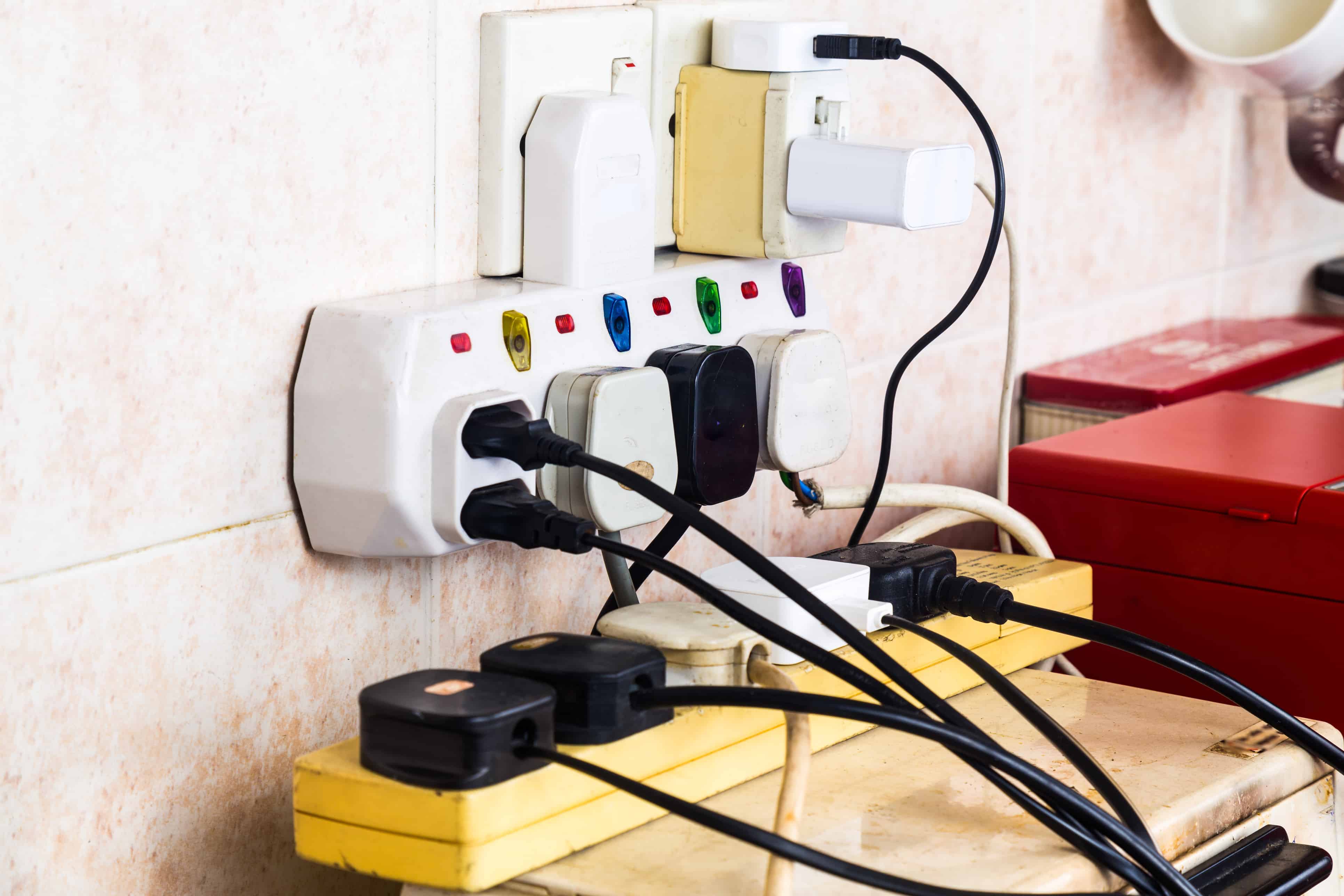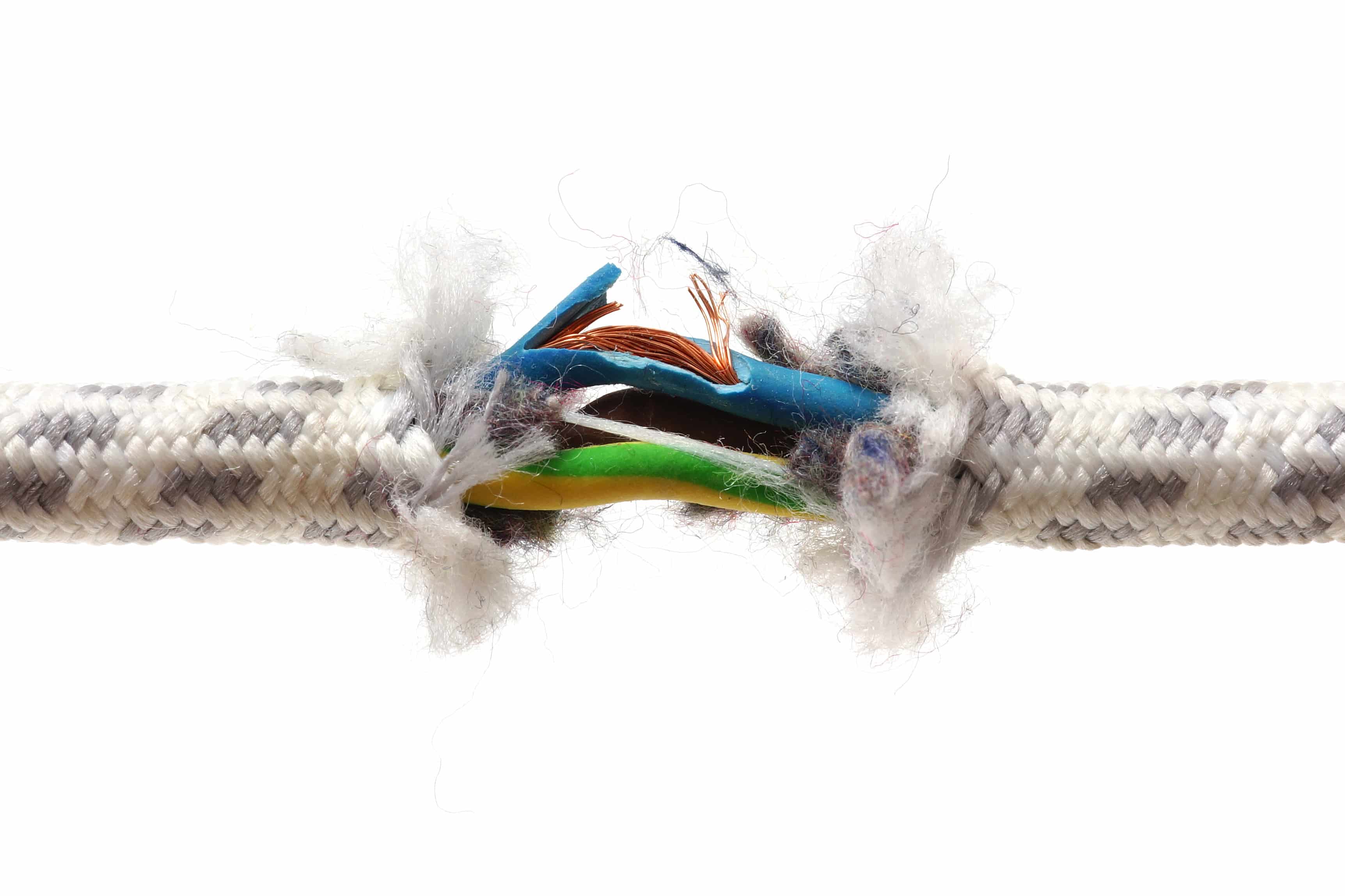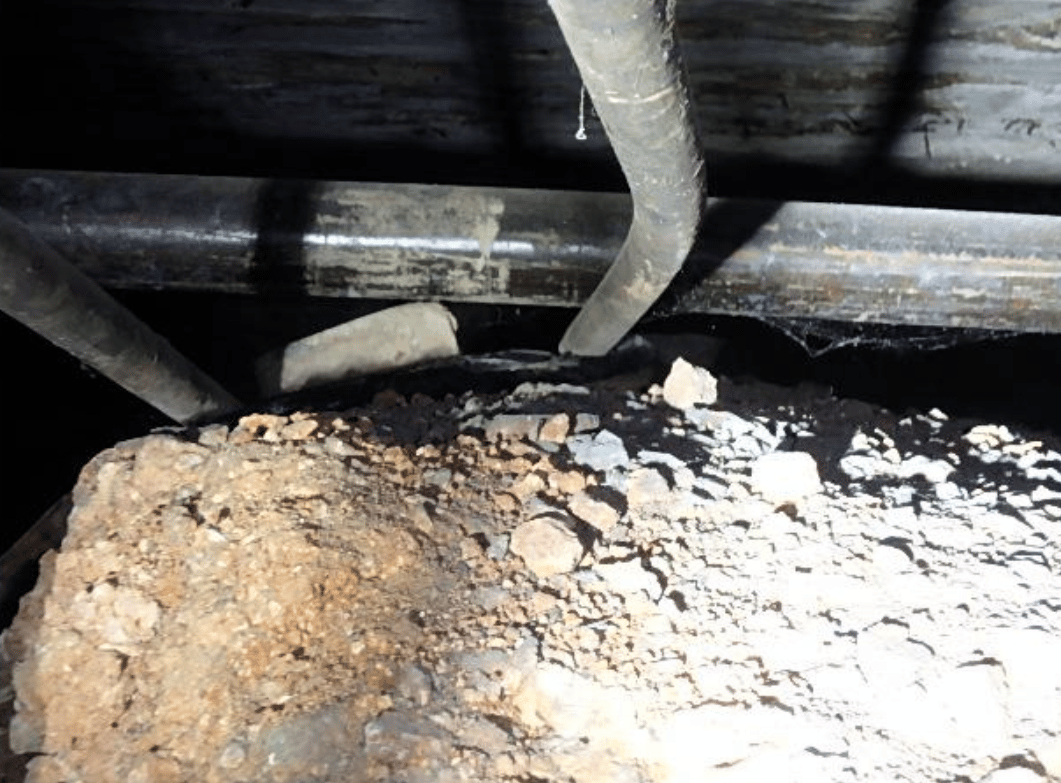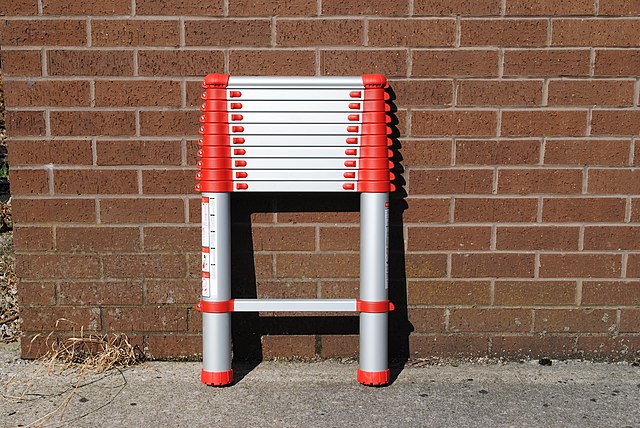Electrical breaker tripping for no reason is a defect that arises from tripped breakers identified in home inspections.
Tripping for no reason?
The most common causes we see in home inspections are due to:
- Electrical branches that are overloaded with too many devices or devices that need too much current for that particular circuit.
- Electrical devices or wiring that has shorts across the wiring that should not touch.
- Ground or Arc faults detected by the GFCI/AFCI safety circuit breaker.
- Faulty breakers are also a possibility, but not as common.

Overloaded Electrical Circuit
Essentially this is what a breaker is designed to do. Preventing the excess draw of current on an electrical branch in the home. Most commonly constant tripping is an indicator of this condition. Finding the current hungry culprit is usually a process of the elimination game.
Ensure lights are off and not the cause then try unplugging all items on the circuit one at a time.
Common household hungry current devices that might cause an overload on the same branch that would result in constant breaker tripping due to no reason:
- Portable heaters
- Vacuum cleaners
- Lighting-large light array candelabras, large runs of light cans, many multiple oversized bulbs in fixtures, or large light arrays on the same circuit.
- Small appliances in a kitchen that heat -warming plates, coffee makers, toaster ovens, fryers, some food processors, and hot water dispensers.
- We all know about hair dryers
Intermittent breaker tripping is naturally harder to troubleshoot: Possible sources are intermittent electrical devices with heavy current on the same branch such as dehumidifier or temperature controlled device or timer on another device (dusk to dawn on large landscape arrays, waste pumps triggered by float switches), thermostatically controlled heat tape on plumbing. For example.
Separate the larger current devices by moving to a separate circuit or having an electrician install an additional circuit for that device. In some instances, an additional or larger wire may be needed to meet the current demand and occasionally this results in the need for an additional electrical panel or replacement.


Short in Electrical Wiring or Appliance
Possible causes home inspectors sometimes see: faulty appliances with shorts are noted, damaged receptacles, damaged extension cords, and exposed home wiring that has recently been damaged. Try disconnecting any suspected shorted small appliances or possibly damaged extension cords and replacing them. Don’t repair wiring shorts in the home wiring yourself. Call an electrician for further investigation if a short is suspected but is not evident.
Newer safety breakers AFCI and GFCI nuisance tripping
Some types of today’s modern electrical breakers often have additional protection designed into them referred to as Ground fault circuit breakers, Arc fault circuit breakers, or a combination of these breakers. While these breakers add a valuable layer of safety they can also sometimes be a source of “nuisance” tripping. You can test AFCI circuit breakers and GFCI circuit breakers yourself by pushing the colored button on the breaker but this may not indicate the same defect that causes the nuisance tripping due to no reason. Electricians can troubleshoot problems from this type of new breaker and can identify the faulty device and replace it.
Can a Circuit Breaker Be Faulty
Yes. We find bad breakers sometimes in home inspections but not as often as one would expect given the number of breakers we inspect. We probably see failures in the newer complex breakers more often than in traditional breakers. Electricians can test standard breakers and analyze the current demand on the circuit. Most electrical repair is not DIY and homeowners should call an electrician.
Like many maintenance instances, seldom does an electrical malfunction fix itself. If you cannot find an obvious solution after investigating the obvious homeowner items then be on the safe side and turn the breaker to the off position and ask an electrician to troubleshoot the problem.
How much does a home inspection cost in Alabama?
How much does a home inspection cost in Alabama? (2022)Home Inspection Price Breakdown. Home inspection prices in Alabama can vary considerably. Generally, the price of a typical home inspection for a typical house is in the 400-600 dollar range. The price can go up...
Home Inspection Repair Birmingham AL
Home Inspection Repairs? Now that you have had your home inspection it is time to knock out that repair list. The first thing to do is a get a quote from a Birmingham Contractor. Most inspection reports specify what type of contractor is needed to do said repair. If...
Ladder For High Ceiling
Ladder for High Ceilings What is the best ladder for high ceilings? That depends on who you ask. As home inspectors we have had good luck with telescoping ladders. We have also had good luck with folding ladders like the Little Giant Ladders and their variations. The...


